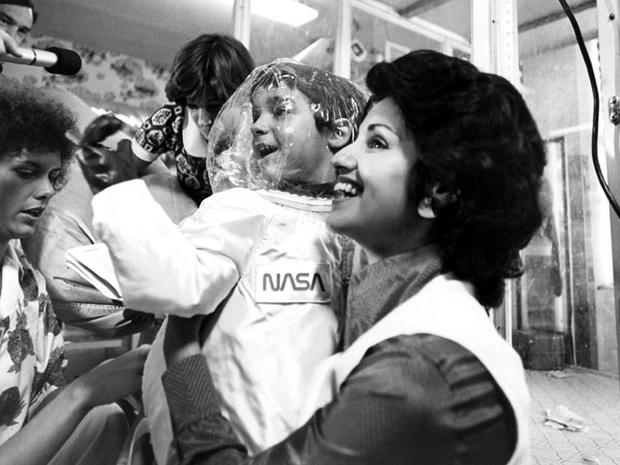A small black and white picture, in the corner of a slide of the Immunology lecture with the above caption, grasped 100% of my attention (sadly) rather than what I should have been concentrating on, at that particular moment. Suffering from the consequences of ‘almost-making-it-to-the-lecture-on-time’ and not being there 5 minutes earlier, I was unable to make out what was shown in the picture exactly, from where I sat. As a result, first thing after the lecture, a google search was conducted on the term “bubble boy”, to ultimately result in this article, with the story of the boy that lived in a bubble…
Born in the year of 1971, on the 21st of September, baby David Vetter was only granted a 20 second exposure to the normal surrounding. 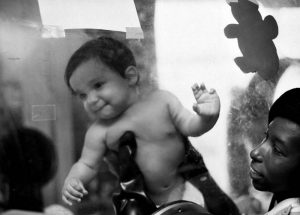 Immediately after that brief time period, he was placed in a plastic isolator tube. Reason for this strange step was David being born with Severe Combined Immune Deficiency (SCID), one of the most severe types of immunodeficiency diseases.
Immediately after that brief time period, he was placed in a plastic isolator tube. Reason for this strange step was David being born with Severe Combined Immune Deficiency (SCID), one of the most severe types of immunodeficiency diseases.
SCID, pronounced as “skid”, is a rare, potentially fatal, primary immunodeficiency. This results in a combined absence of T-lymphocyte and B-lymphocyte function, both of which play vital roles in the human immune system. SCID is inherited as an X-linked recessive trait. Hence, only males have this type of disease. Females that carry the gene, have a 50% chance of passing it on to a son conceived and an equal chance of passing the ‘carrier’ state to a daughter. There are at least 13 different genetic defects that can cause this. These collectively lead to extreme vulnerability to very serious infections, that will ultimately be the cause to one’s death.
Back then, a bone marrow transplant from an exactly matched donor was the only cure for SCID. Unfortunately there was no match available in David’s family. David was not the first child in the family to be born with this rare genetic disease. Carol Ann and David J.Vetter’s first son had also died in infancy, due to this. After David’s mother learned that she was going to give birth to another boy, doctors told her that her child had a one in two chance of being born with SCID. Yet, the Vetters refused to abort their child.
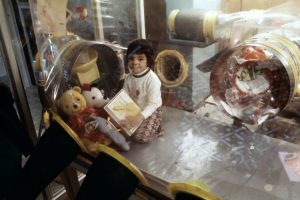 Going for the only option they had within their reach and control, David’s parents put their faith and trust in the doctors and Science, to ensure the best possible care for their baby. This was how bubbles came into young David’s life. The “bubble“, or in more complex terms, ‘isolator containment centers’ designed by NASA engineers, was the only treatment option available for him at that time.
Going for the only option they had within their reach and control, David’s parents put their faith and trust in the doctors and Science, to ensure the best possible care for their baby. This was how bubbles came into young David’s life. The “bubble“, or in more complex terms, ‘isolator containment centers’ designed by NASA engineers, was the only treatment option available for him at that time.
Though doctors believed David would be cured by the age of two, it did not happen. Growing up in a bubble, little David captured the entire world’s attention and became popular as the boy in the bubble; the “bubble boy”. Staff members of the Texas Children’s Hospital and probably many others, had the question of how ethical it was to raise a child in that manner, confined to a bubble in his most active playful years, deprived of the freedom most children cherish. They eventually agreed it was ethical, given the circumstances young David was under.
 At the age of six, David took his first steps out of his bubble, thanks to NASA. A special spacesuit was designed for him. Wearing it, he could walk and play outside. Every time David used his suit, helpers had to complete a 24-step pre-excursion hookup and a 28-step suit-donning procedure to ensure that his environment was sterile and germ-free. Despite the complexity of the procedure involved with the spacesuit, due to this great creation, David’s mother was able to hold her son in her arms for the first time, on the 29th of July, 1977.
At the age of six, David took his first steps out of his bubble, thanks to NASA. A special spacesuit was designed for him. Wearing it, he could walk and play outside. Every time David used his suit, helpers had to complete a 24-step pre-excursion hookup and a 28-step suit-donning procedure to ensure that his environment was sterile and germ-free. Despite the complexity of the procedure involved with the spacesuit, due to this great creation, David’s mother was able to hold her son in her arms for the first time, on the 29th of July, 1977.
“David’s life showed courage, patience and understanding. He accepted the unique circumstances of his life, but waited to find the way to come out of his bubble. We prepared him to be able to socialize and eventually join the outside world. Science was protecting David, this was never an experiment.” – Carol Ann (David’s mother)
David’s parents did their part in making their son keep in pace with other kids of his age. He was taught his ABCs and math through the bubble, followed by school lessons as he grew up. He was never left away from other social aspects of life either. David had friends. He celebrated Halloween with his family and went around the neighborhood just like his friends. Dressed up in a costume inside his bubble, David distributed candy through gloved hands. Like any other little brother he had his own fights and playtime, with his sister.
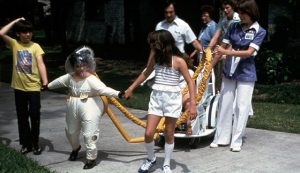
David’s family was careful to avoid media getting into the life of their son and creating chaos in his mind. However at the age of eight or nine, David saw his photo on a newspaper. His reaction to it, was fondly remembered by his mother as follows.
“The next day, he told me that he was a star. I didn’t know what he was referring to and told him that, yes indeed he was a star because he lights up my life. David quickly corrected me and told me that he was a star because his picture was in the paper the day before and stars don’t have to clean up toys. I told him that his picture wasn’t in the paper today, so today you clean up your bubble!”
Upon reaching the age of 11 years, David had grown to be more thoughtful and wanted to see the stars. So his family took him to see the stars for 20 minute duration, granting his wish on his birthday. Little did they know that it would be his last time of gazing up at the stars.
In 1983, the Vetters learnt of a new treatment procedure that might work out for David; a bone marrow transfusion from a donor who is not perfectly matched and decided to go for it. David’s sister, Katherine was the donor of the bone marrow. 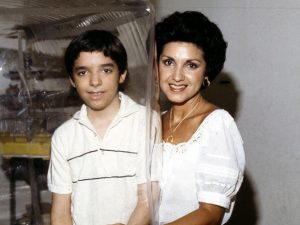
Sadly, four months after the bone marrow transfusion, in the year of 1984, 12 year old David died from lymphoma, a type of cancer. The cancer had entered his system by the Epstein-Barr virus, a member of the herpes virus family.
The story of the bubble boy however, did not end here. After his death, Texas Children’s Allergy and Immunology Clinic opened the “David Center”. It was dedicated to research, diagnosis and treatment of immune deficiencies. David’s mother joined the Immune Deficiency Foundation, commonly known as the “IDF”. She carried on David’s legacy through her work, to aid many other young victims and help them not to face a plight similar to that of her beloved son’s.
Owing to what was learned from David Vetter’s life and death, many children with SCID are now being diagnosed early. They are directed to bone marrow transplants and blessed with a cured, longer life. As stated by Carol Ann, “David was a great blessing to our family and to the world.”

Reference:
https://primaryimmune.org/living-pi-explaining-pi-others/story-david
https://www.cbsnews.com/pictures/bubble-boy-40-years-later-look-back-at-heartbreaking-case/15/
Image Courtesy:
https://www.google.lk

